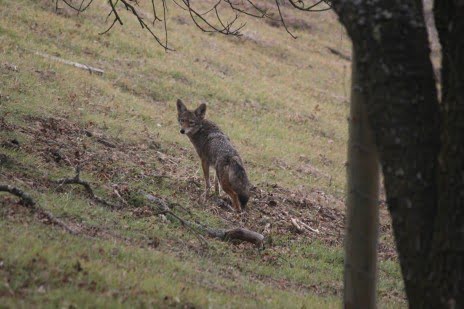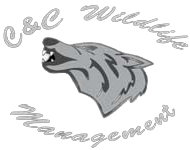COYOTE
The coyote (Canis latrans, meaning “barking dog”, also prairie wolf [2]) is a member of the Canidae (dog) family and a relative of the domestic dog. Coyotes are native to North America and are only found in North America south to Costa Rica. European explorers first encountered these canines during their travels in the American Southwest. They may occasionally assemble in small packs, but normally hunt alone. Coyotes live an average of about 6 years. The word “coyote” was borrowed from Mexican Spanish, which itself borrowed the term from the Nahuatl (Aztec) word coyotl, which may have meant “singing dog”.
Despite being extensively hunted, the coyote is one of the few medium-to-large-sized animals that has enlarged its territory since human encroachment began (another is the raccoon). Coyotes have moved into most of the areas of North America formerly occupied by wolves, and the “dog” observed foraging in a suburban trashcan may in fact be a coyote.
Coyotes are essentially nocturnal, but they will occasionally hunt during the day unless threatened by predators or humans. They are highly adaptable and live in a variety of different niches. Their behavior can vary widely depending on where they live, but in general they live and hunt singly or in monogamous pairs in search of small mammals including rabbits, mice, shrews, voles, and foxes. The coyote is an omnivore and adapts its diet to the available food sources including fruits, grasses, and vegetables along with small mammals. In Yellowstone National Park, before the reintroduction of the wolf, coyotes began to fill the wolf’s ecological niche, and hunted in packs to bring down large prey.
Coyotes mate for life. They breed around the month of February and four to six pups are born in late April or early May. Both parents (and sometimes undispersed young from the previous year) help to feed the pups. At three weeks old the pups leave the den under close watch of their parents. Once the pups are eight to twelve weeks old they are taught to hunt. Families stay together through the summer but the young break apart to find their own territories by fall. They usually relocate within ten miles. The young are sexually mature at 1 year of age. Hearing a coyote is much more common than seeing one. The calls a coyote makes are high-pitched and variously described as howls, yips, yelps and barks. These calls may be a long rising and falling note (a howl) or a series of short notes (yips). These calls are most often heard at dusk or night, less often during the day. Although these calls are made throughout the year, they are most common during the spring mating season and in the fall when the pups leave their families to establish new territories. Many people find these calls eerie or disturbing. As well, its howl can be very deceiving: due to the way the sound carries, it can seem as though it is in one place, when the coyote is really elsewhere.
In rural areas, coyotes will respond to human calls. This is most often after the coyotes have started a howling session. They will also respond to recorded howls. In some of these areas, the coyotes will stop and wait for the humans to stop before resuming their howling session, once they’ve figured out that it isn’t one of them that’s been calling to them. In areas where the coyotes have grown accustomed to humans calling back to them, they tend to continue with simpler calls back to the humans and return to more complex calls when the humans get tired of calling to them. Playing a recorded wolf howl will make them stop for up to an hour before they start in again (probably because wolves prey upon coyotes).
Coyotes also thrive in suburban settings and even some urban ones.

